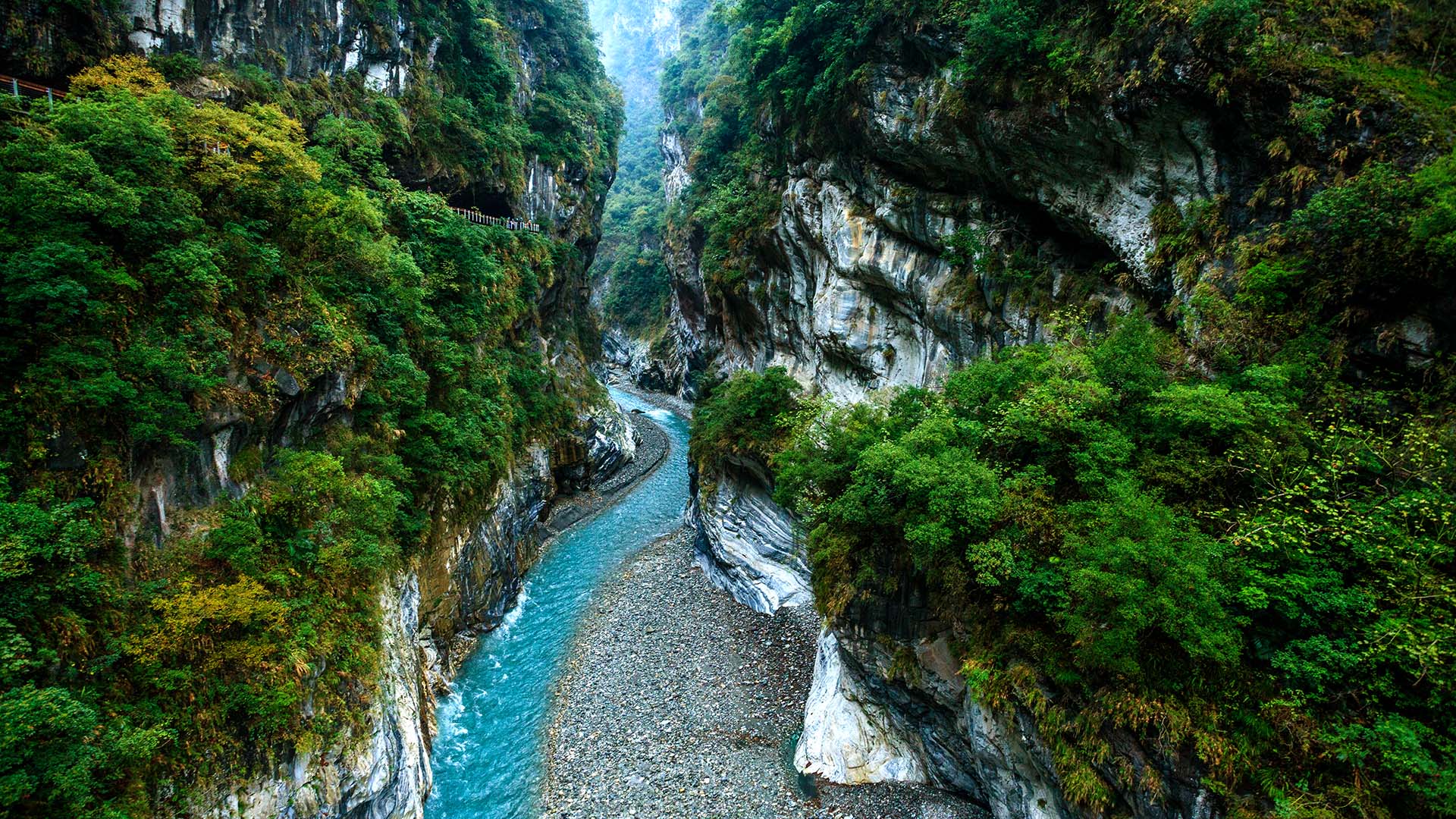Whether it’s a city break you desire or a beach getaway, in East Asia, the weekend trip is making a comeback. Sip tea on a mountain, dive in a sinkhole and explore an artist village. And of course, eat your way through seafood markets and noodle shops — here are six exceptional weekend vacation spots.
As always, check for travel restrictions and closures before planning your trip.
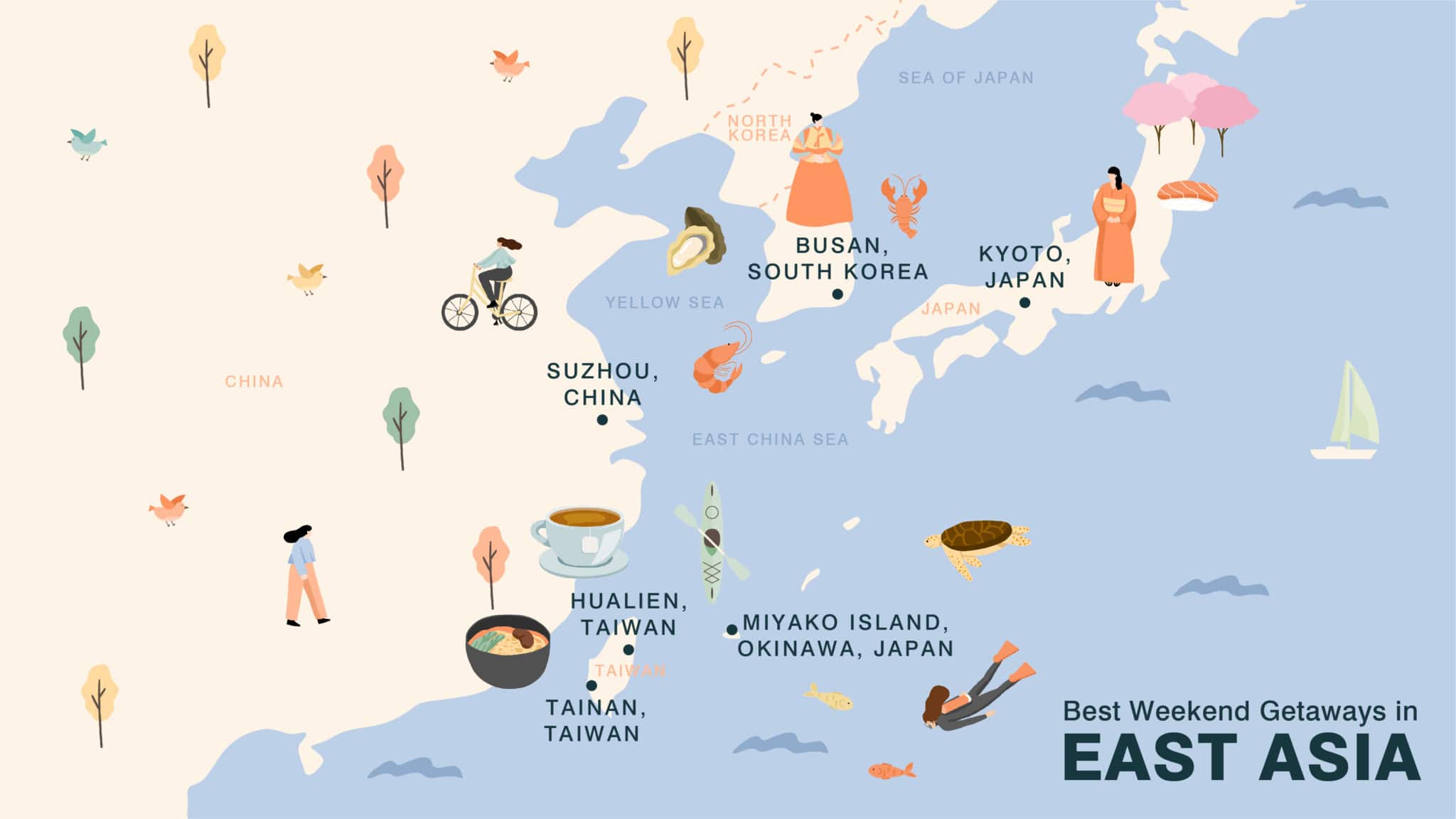
Kyoto, Japan
Walk down the cobbled alleys between bamboo houses by the Kamo River with men and women dressed in floral yukata (lightweight kimonos) and carrying parasols. Indeed, Kyoto is a treasure-trove of history — popular sites such as Fushimi Inari Shrine and Arashiyama Bamboo Grove attest to this. Plus there is also Okazaki shrine, a traditional shrine decked in adorable kawaii rabbit toys, statues and carvings.
Hungry? Visit Nishiki Market, where vendors have sold fish since the eighth century. Today they also sell everything from sashimi to confectionary. And don’t forget Kyoto’s many fine dining restaurants with multicourse kaiseki meals, which often include a procession of grilled mackerel, egg custard and tofu stew.
Try Gion Nanba, hidden behind a small yellow door, and Yagenbori, which occupies a late-19th-century tea house.
Busan, South Korea
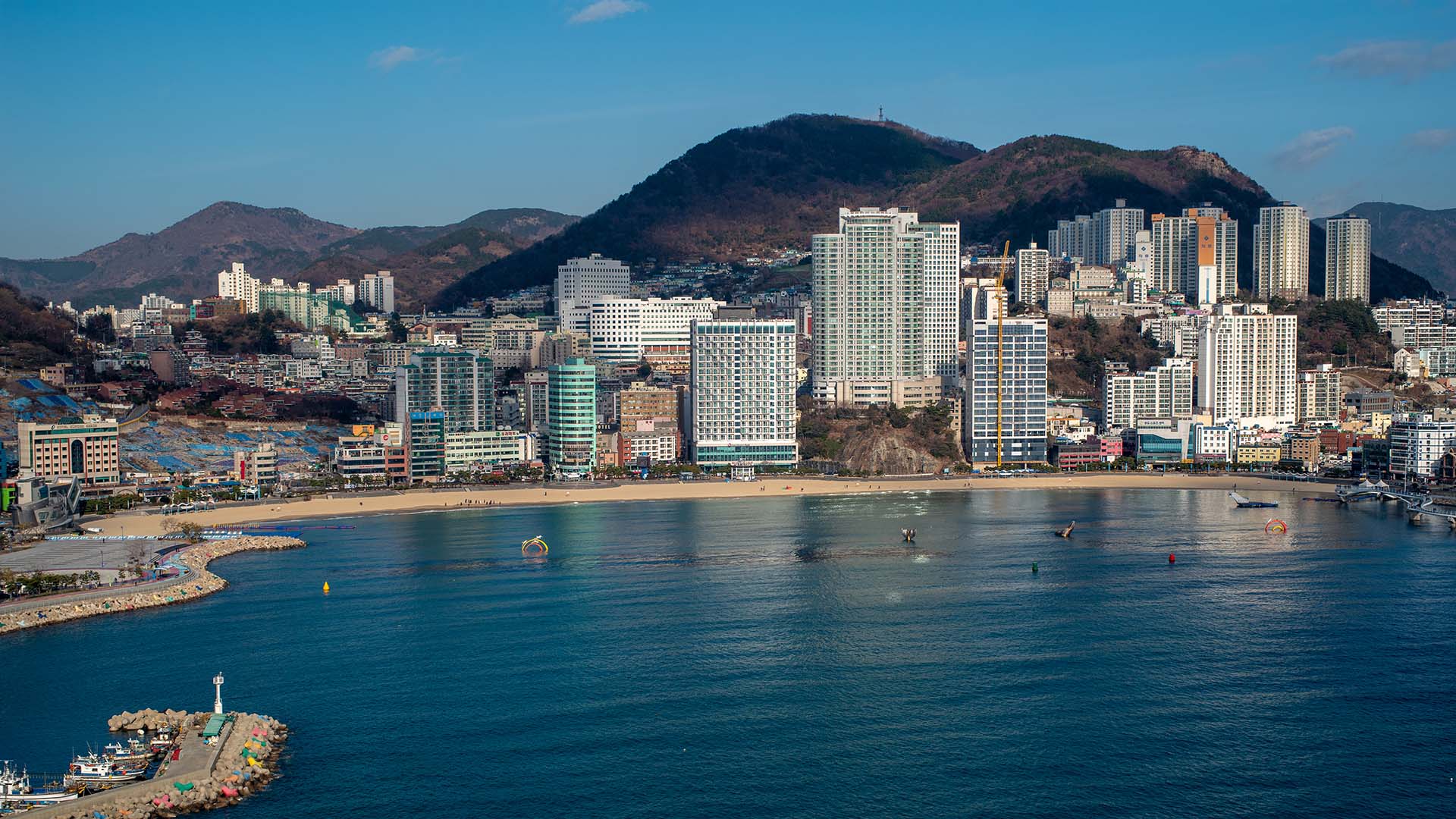
Hundreds of beach umbrellas line the golden sands of Busan’s (in)famous Haeundae Beach, known as a haven for beachgoers swimming in the calm waters by day and partying to a techno soundtrack by night.
But this southern beach town is more than a summer party destination. Hike to Gamcheon Culture Village, a former 1950s shantytown converted into a thriving artist village. From afar, the colorful houses perched on a steep hill resemble Legos. Local artists have painted murals on the walls of the art galleries, craft stores and cafés.
Spend another morning at Jagalchi, the largest seafood market in South Korea. Each morning, fishermen haul their catch — clams, oysters, squid, lobsters and crabs — from their boats to the stalls. Choose what you want to eat and bring it to the second floor for shop owners to cook.
Tainan, Taiwan
The capital of Taiwan until the late 19th century, the southern city of Tainan has historic, cultural and gastronomic offerings. Visit Anping Fort, a mid-1600s red-brick fort, one of the few remnants of the Dutch’s brief colonization before Ming loyalist Koxinga expelled them.
Nearby is Anping Tree House, where the roots of an old banyan tree have overtaken a brick house. Walk on the metal and wood walkways built into, and propped up by, these gigantic roots.
No visit to Tainan is complete without eating danzimian, yellow noodles soaked in prawn-based broth and served with minced pork, bean sprouts, cilantro and prawn. The best place to try danzimian is at the original Du Hsiao Yueh shop, founded in 1895. It’s now a popular chain, and displays show how street peddlers used to make the noodles.
Miyako Island; Okinawa, Japan
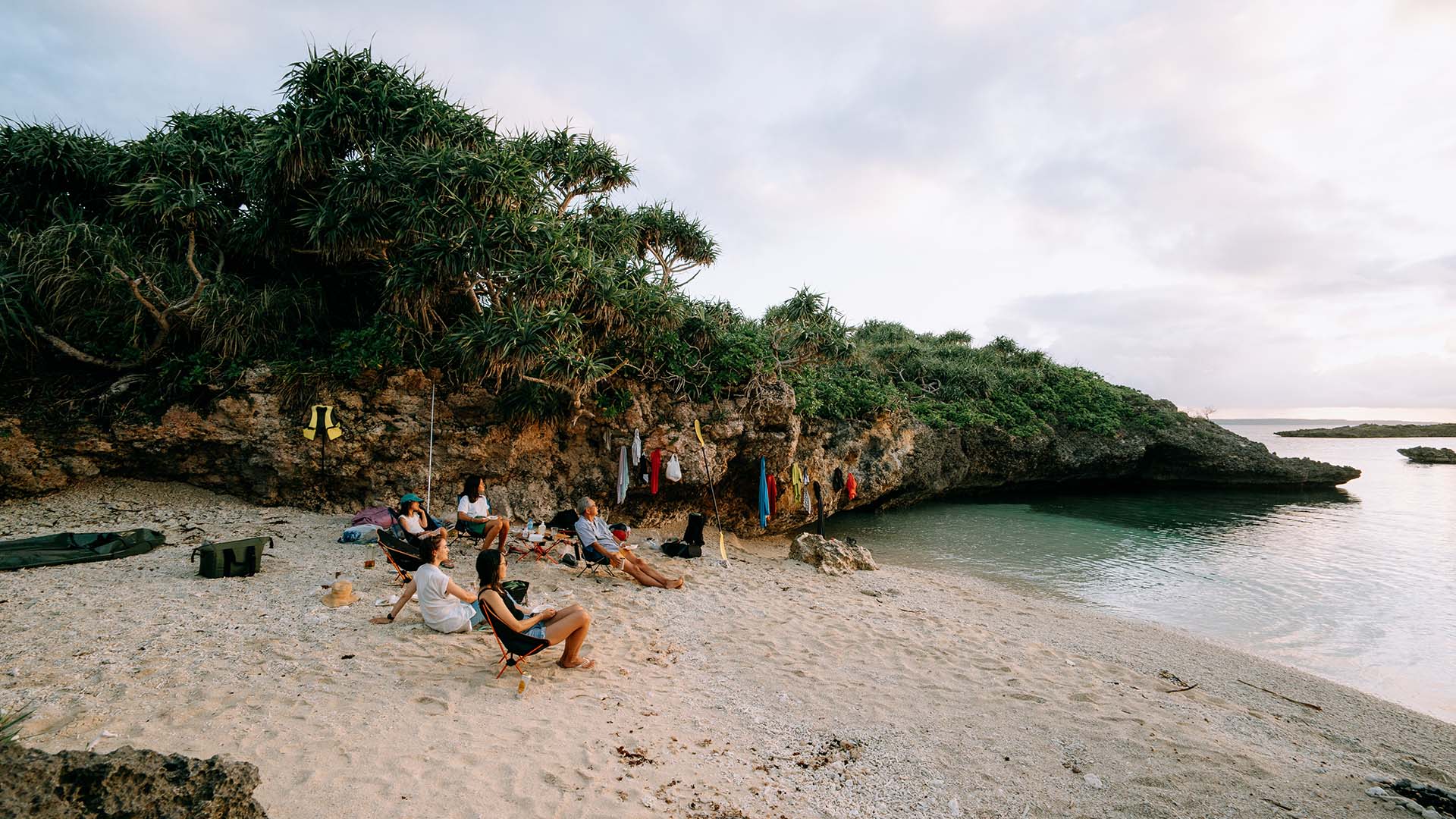
Miyako-jima, or Miyako Island, is only a 50-minute flight from Naha on Okinawa’s main island, and it’s the quintessential white sand beach getaway. There’s Aragusuku beach, with its pristine waters that are home to sea turtles, and Cape Higashi-Hennazaki, with its iconic lighthouse.
Irabu-jima is a smaller island connected to Miyako-jima, and here, you can snorkel in the clear waters on the beaches near IRAPH SUI, a Luxury Collection Hotel. You’ll also find Toriike Pond, a mammoth blue sinkhole with an underwater tunnel that connects to the ocean where skilled scuba divers can explore.
Hualien, Taiwan
Named for the Indigenous Truku tribe, Taroko Gorge, with its network of black marble cliffs and meandering turquoise rivers, is one of Taiwan’s most stunning natural wonders. The many hiking trails, including the short and scenic Lushui Trail, bring visitors up close to the birds and butterflies that inhabit the cliff’s many crags.
A kayak tour is another way to experience the gorge, and these depart from Qingshui Cliff, a towering, tree-shrouded precipice shielding a small sliver of pebbly coastline.
If you simply want to relax, south of the gorge lies Qixingtan beach, a pebbly and calm stretch of shore that is good for swimming and stargazing.
Suzhou; Jiangsu, China
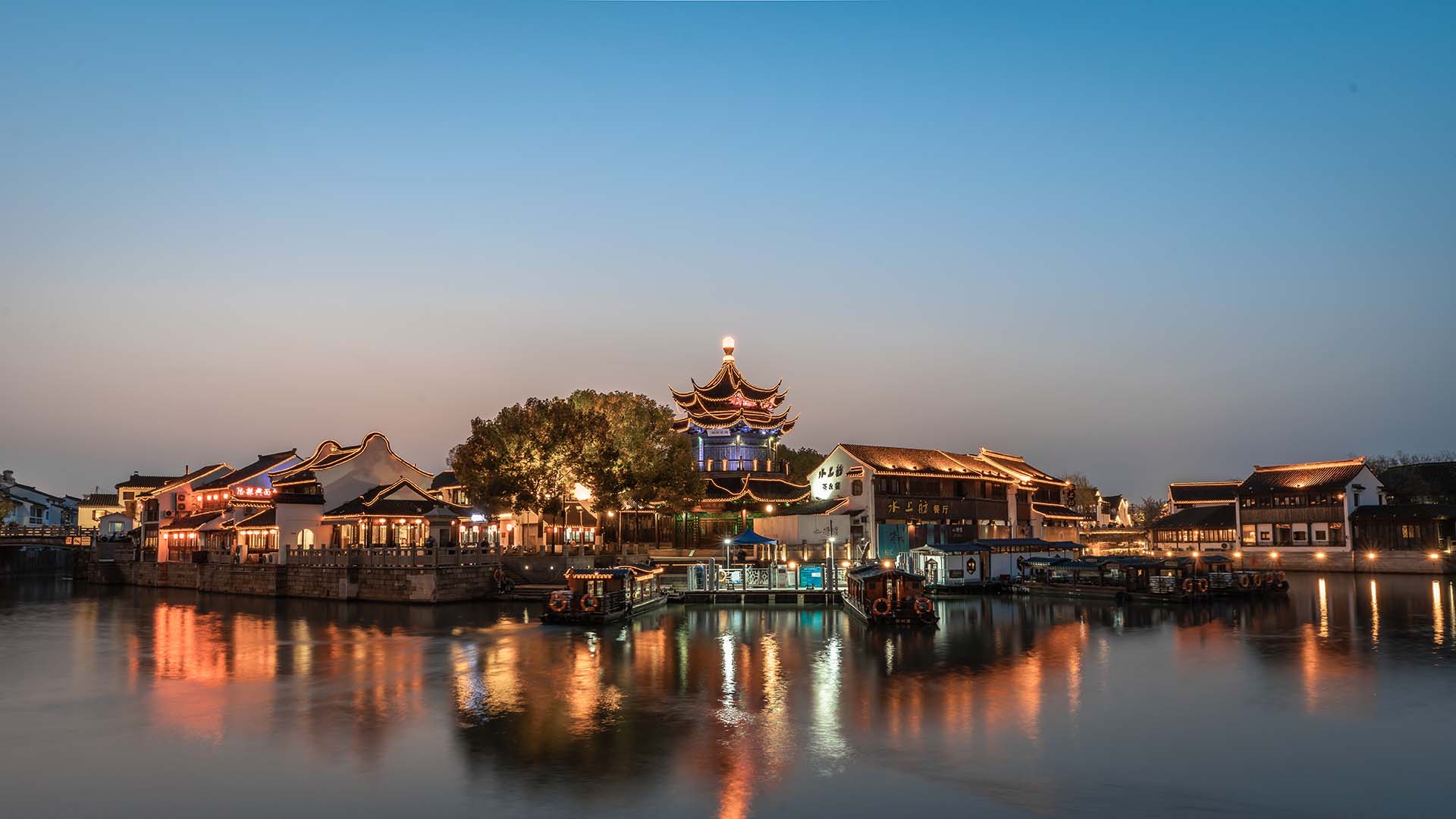
A half-hour bullet train ride from Shanghai, Suzhou, with its waterways and stone arched bridges, is a city of yesteryear. Go on a slow boat ride down the canals, where at night red lanterns strung on traditional homes illuminate the water. Stroll through the 16th-century Humble Administrator’s Garden and admire its lotus ponds from the pavilions.
It’s the mountains that give Suzhou its flavor, and in particular, the green-tea-growing region of Dongting near Taihu, or Lake Tai. For more than a thousand years, biluochun, literally translated as “green snail spring,” has been grown here, and visitors can learn about tea harvesting and sample tea at one of the many tea plantations.
End your weekend getaway with an evening of Kunqu opera, which has 600 years of history, at the Jiangsu Suzhou Kun Opera Theater.
